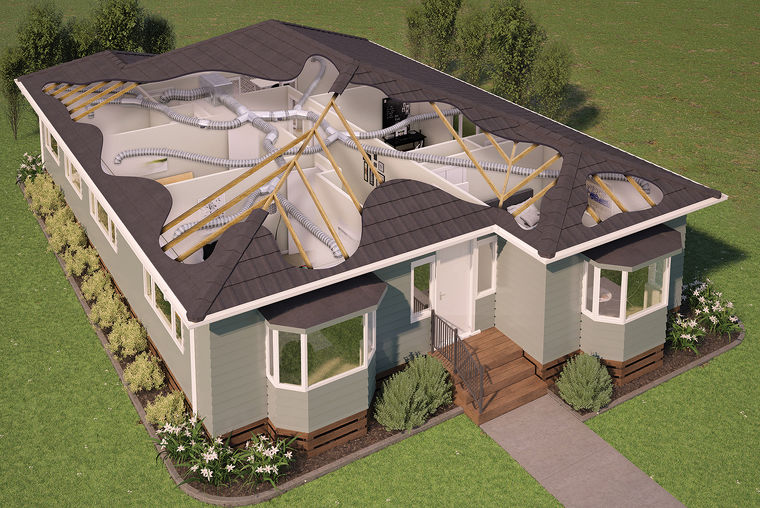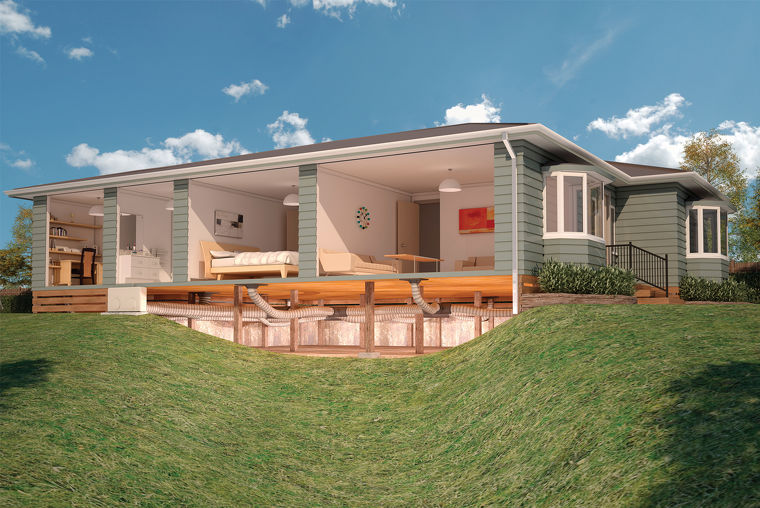Ducted Central Heating
A gas ducted central heating system is where heated air is distributed throughout the home by a network of ducts, usually in the roof cavity or under the floor. Air is heated in a heat exchanger, which is heated by clean burning gas. The warm air enters each room through an outlet located in the floor, ceiling or wall.
The heated air is then re-circulated through an inlet (Return Grille) that is normally centrally located and may be in the wall or ceiling. This air is then passed back over the heat exchanger, heated and re-circulated.
With heating a house we normally required 5 air changes per hour to keep warm. With cooling, the number of air changes increases to 10. The size of the heat exchanger is determined therefore by the size of the house, heating or cooling, insulation, building materials, windows and local climatic conditions.
We use our Bonres® system to help guide us with furnace size selection and the required number of duct outlets. All 4 and 5 star Bonaire units have high tech modulating fan technology that delivers whole-of-home heating efficiently and quietly.

